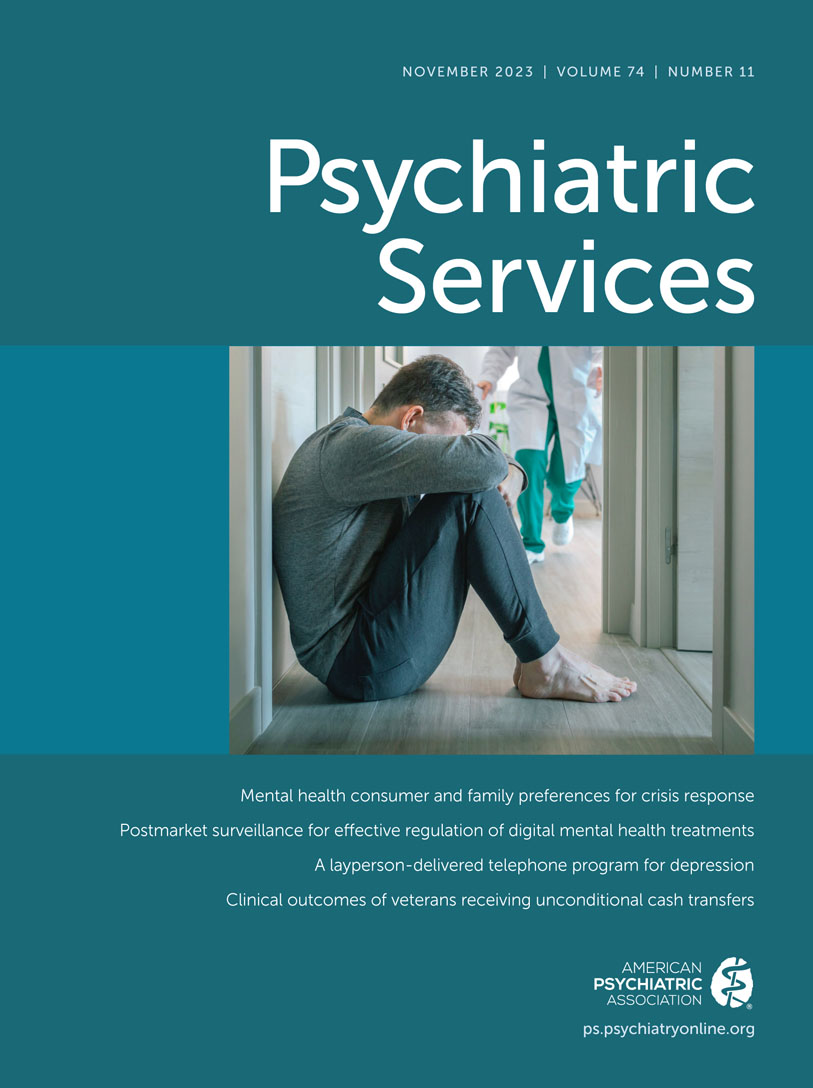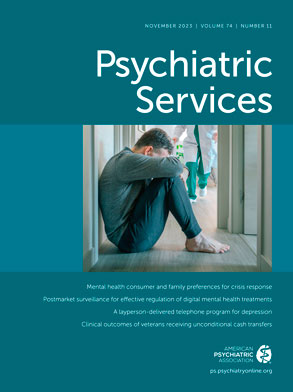This Editor’s Choice collection and others are available online in the Editor’s Choice section of ps.psychiatryonline.org.
The 988 emergency line, a three-digit emergency calling code for mental health emergencies, was launched across the United States on July 16, 2022. Available by call, text, and online Web-based chat, 988 is available free of charge to individuals in crisis in all 50 states, five U.S. territories, and Tribal areas. The 988 emergency line is envisioned as the gateway to a continuum of services designed to support individuals experiencing psychiatric crises; it includes an easy-to-remember phone line staffed by trained crisis counselors, mobile crisis response teams, and crisis stabilization facilities, with a collective goal of stabilizing psychiatric crises and linking individuals to ongoing care and resources. This continuum of care, also referred to as “Someone to call, someone to come, and somewhere to go,” provides a distinct alternative to the use of armed law enforcement or general medical settings ill equipped to stabilize psychiatric emergencies.
This Editor’s Choice collection reflects on the historic first year of 988 and on the diversity of perspectives on its implementation. In addition to a focus on new opportunities for crisis services, the articles are organized by phases of the crisis continuum of care. Readers interested in learning more about crisis services that predate the launch of 988 may also be interested in the October 2019 collection on Community-Based Mental Health Crisis Services.
988 and Crisis Services: a Turning Point in the Response to Psychiatric Emergencies
Fulfilling the Goals of 988 Through Crisis Stabilization Care
Hirschtritt ME, Howard CA, Simon GE
Psychiatr Serv 2023; 74(8):889–891
Cops, Clinicians, or Both? Collaborative Approaches to Responding to Behavioral Health Emergencies
Balfour ME, Hahn Stephenson A, Delany-Brumsey A, et al.
Psychiatr Serv 2022; 73(6):658–669
New Opportunities to Improve Mental Health Crisis Systems
Hogan MF, Goldman ML
Psychiatr Serv 2021; 72(2):169–173
Crisis Lines and Call Centers: “Someone to Call”
Crisis Lines: Current Status and Recommendations for Research and Policy
Zabelski S, Kaniuka AR, Robertson RA, et al.
Psychiatr Serv 2023; 74(5):505–512
Mental Health Emergency Hotlines in the United States: A Scoping Review (2012–2021)
Matthews S, Cantor JH, Brooks Holliday S, et al.
Psychiatr Serv 2023; 74(5):513–522
“If this is an Emergency, Hang up and Dial 911” in the Era of 988
Pope LG, Compton MT
Psychiatr Serv 2022; 73(10):1179–1181
Mobile Crisis Response: “Someone to Come”
How to Reach a Mobile Crisis Team: Results from a National Survey
Odes R, Manjanatha D, Looper P, et al.
PS in Advance (March 20, 2023)
Crisis Response Model Preferences of Mental Health Care Clients With Prior Misdemeanor Arrests and of Their Family and Friends
Pope LG, Patel A, Fu E, et al.
PS in Advance (April 20, 2023)
Field Visit Contact Rate by Mobile Crisis Teams as a Crisis System Performance Metric
Goldman ML, Ponce AN, Thomas M, et al.
Psychiatr Serv 2023; 74(7):756–759
Mobile Crisis Metrics: Moving Toward a Functional Crisis Continuum of Care
Rafla-Yuan E
Psychiatr Serv 2023; 74(7):673
Revisiting Research Safety Protocols: The Urgency for Alternatives to Law Enforcement in Crisis Intervention
Anene E, Nallajerla M, Bath EPJ, et al.
Psychiatr Serv 2023; 74(3):325–328
Crisis Stabilization: “Somewhere to Go”
Adoption of Best Practices in Behavioral Health Crisis Care by Mental Health Treatment Facilities
Burns A, Menachemi N, Yeager VA, et al.
Psychiatr Serv 2023; 74(9):929–935
Economic Evaluation of a Crisis Residential Program
Olmstead TA, Rathouz PJ, Casey KA, et al.
Psychiatr Serv 2022; 73(3):346–348
Trends and Geographic Availability of Emergency Psychiatric Walk-In and Crisis Services in the United States
Kalb LG, Holingue C, Stapp EK, et al.
Psychiatr Serv 2022; 73(1):26–31
The Crisis and Transition Services (CATS) Model: A Program to Divert Youths in Mental Health Crisis From the Emergency Department
Ribbers A, Sheridan D, Jetmalani A, et al.
Psychiatr Serv 2020; 71(11):1203–1206

